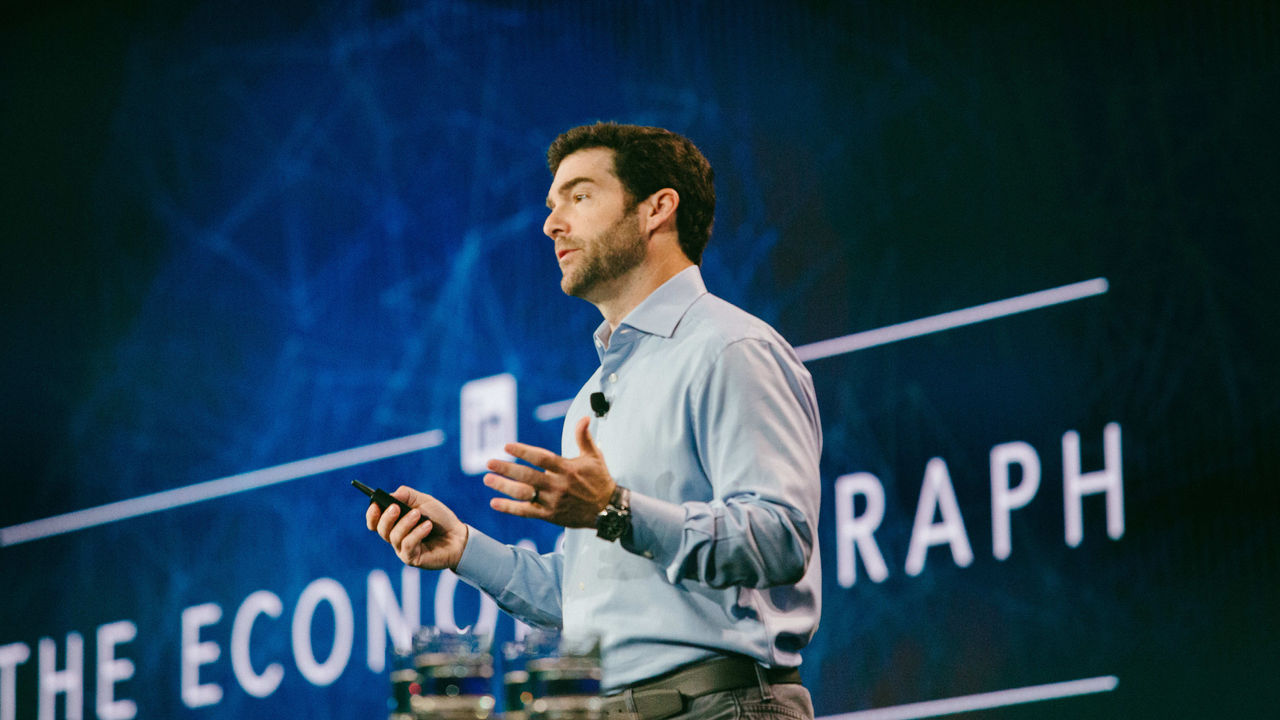LinkedIn Unveils Talent Insights, a New Analytics Tool For Recruiters
On-demand service digs up info on talent pools, skills and the competition

NASHVILLE—LinkedIn's newest offering aims to come to the rescue of talent acquisition leaders prodded by the C-suite or the board to support the company's hiring strategy with data.
LinkedIn Talent Insights, scheduled for wide release in 2018, is a self-service product that compiles analytics on talent pools, skills and other companies' workforce composition, so that HR professionals can make smarter decisions on workforce planning, sourcing, skills development and retention.
LinkedIn CEO Jeff Weiner introduced the service at LinkedIn Talent Connect, a conference for recruiting professionals.
"Imagine where you can identify the fastest growing skills within your company, where demand is accelerating fastest, where there are potential skills gaps, and having the ability to develop the right recruiting, learning and development strategies to close those gaps," he said. "Imagine that when you identify the skills and talent you need to take advantage of future opportunities, you can narrow in on specific locations globally that have a surplus of that talent. Imagine being able to compare the skills of your organization to that of your competitors and being able to measure the effectiveness of your workforce strategy by evaluating talent inflows and outflows relative to your competition."
Talent intelligence is especially important when approaching strategic discussions with business leaders on hiring and workforce planning, said Eric Owski, LinkedIn's head of product for Talent Insights and Talent Brand. "Maybe [the CEO] wants to know where you're going to start looking for engineers since your local market is over-fished. Maybe they want to understand why attrition is skyrocketing on the sales team. Or maybe they want your input on where to open a new office based on hiring difficulty in different locations."
LinkedIn's talent intelligence unit receives 10,000 requests every year from employers looking for answers to help inform their recruiting strategy, said Kate Hastings, LinkedIn's senior director of insights. They field queries like "What are the best emerging cities to hire engineers?" "Are we losing critical skills to other companies?" and "How does my employer brand compare to my peers?"
There's a disconnect in the industry, she said. "Over 70 percent of CEOs say that talent creates a competitive advantage for their company, but only about a third of HR functions say they are good or excellent in finding data insights needed to execute a talent strategy."
After talking with HR leaders, LinkedIn realized that what companies want is not more raw data to sift through but actionable reports. "In some cases HR is already drowning in data," Hastings said. "Clients have told me that they want us to deal with the data, so they can get the answers they need, not after two weeks of discussions with my team or by hiring a team of consultants or data scientists, but in 10 minutes on their laptop."
Owski explained that this product comes from the massive workforce data LinkedIn has amassed from over 500 million members, 11 million jobs, 18 million employers and 50,000 standardized skills.
"We are in the position to tap into a rich global dataset, powered by billions of daily member updates, activities and interactions, to provide a dynamic view on rapidly changing market conditions," he said.
That dataset will be now be available in two different reports: the talent pool report and the company report. "Through the talent pool report, you'll be able to precisely define and understand specific populations of talent you're interested in," Owski said. "Within a few clicks, you'll have a clear picture of what you need to know to recruit and hire for those hard-to-fill roles."
For example, when HR is asked to research electrical engineers in Europe, a query will produce:
- The number of electrical engineers in Europe.
- The number of engineers that changed jobs in the last year.
- The number of current job openings.
- The difficulty of hiring for this position.
"You can then dig deeper and compare London to Istanbul and Athens to Dublin," Owski said. "You might notice that Helsinki has particularly low demand and may be a hidden gem for recruiting. You can also see how this talent pool is migrating between cities and in and out of industries."
The report gives talent leaders a better understanding of their competition. "At a glance, you can see who employs electrical engineers and how many," Owski said. "You can see which companies are growing that part of their workforce and which companies have high attrition. We can also provide deep insight on the strength of your talent brand within a certain talent pool. For example, how much are electrical engineers engaging with your brand relative to your competitors'? How likely is an engineer to respond to one of your recruiters relative to other companies? How does talent perceive you? Are there any perception gaps you need to close in order to effectively recruit this talent?"
The company report can be used to benchmark against competitors and will produce insights such as:
- How is the company's workforce distributed by location and job function?
- What is the skills composition of their workforce and what skills sets are growing?
- How does the workforce composition compare?
- How does talent flow in and out of that company?
- What schools or other companies does your competitor hire from?
The reports will be exportable with easy-to-understand data visualizations and the tool will be integrated with LinkedIn Recruiter, so a talent search can follow an intelligence query
LinkedIn hasn't set a price yet for Talent Insights, Owski said.



